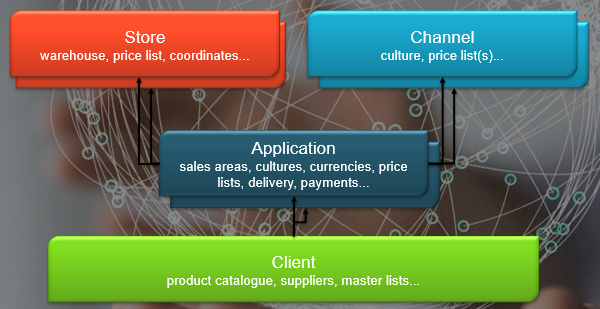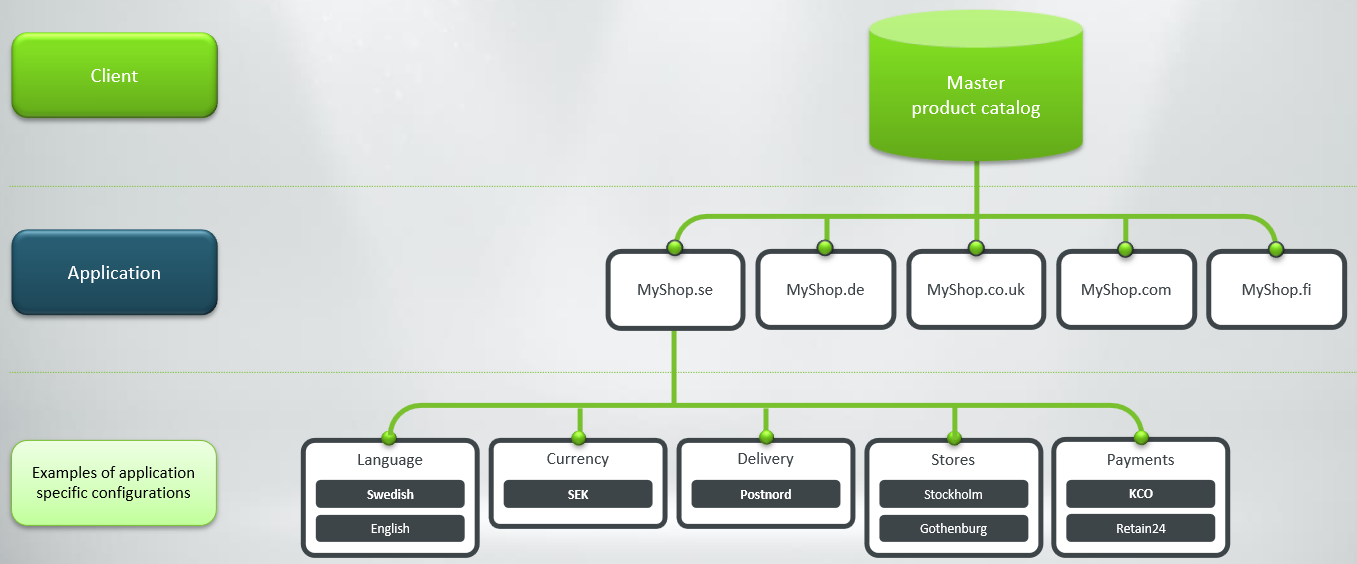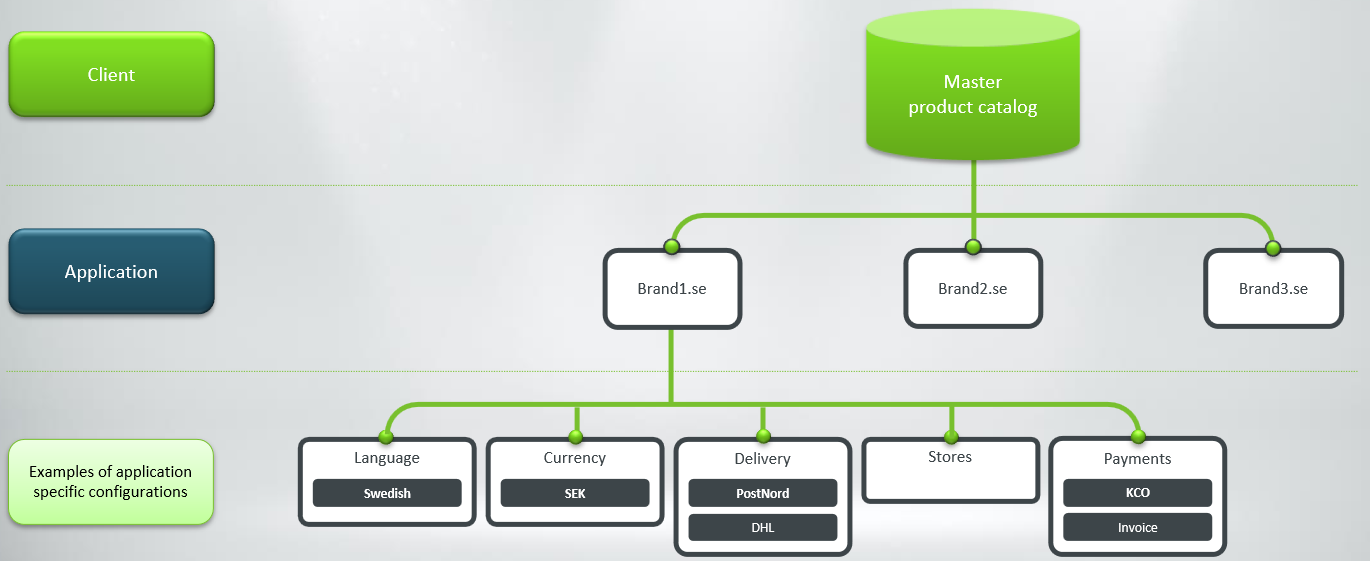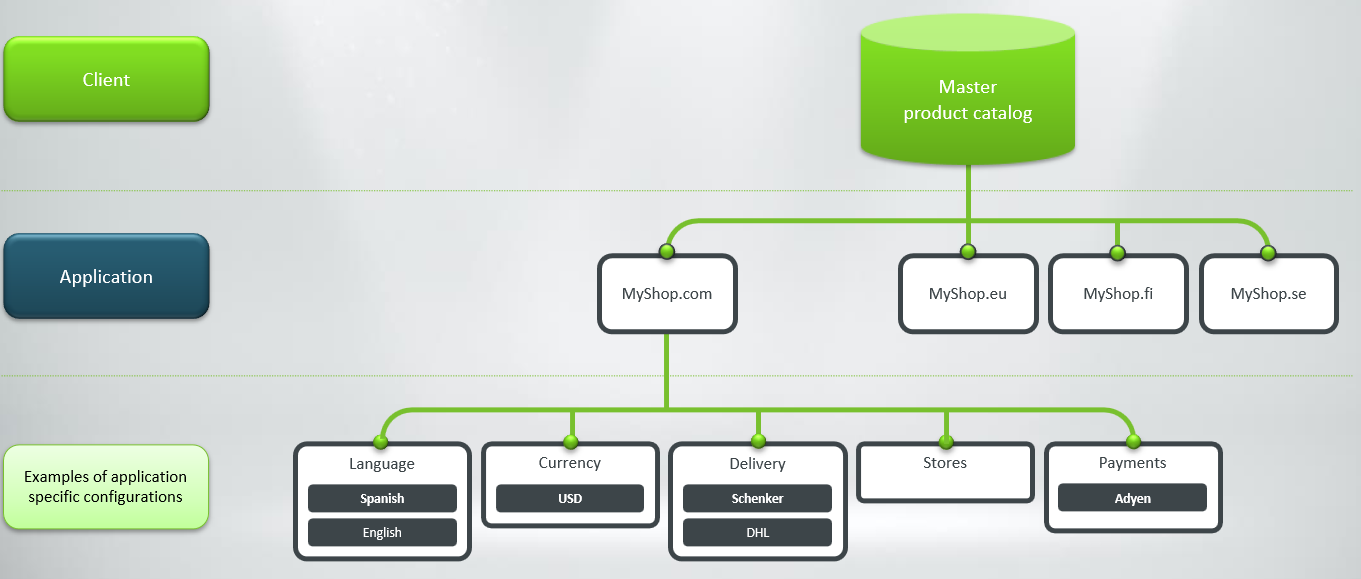Norce Commerce Application structures
Applications in Norce contain all the business logic for a specific business and target.
Applications
The functionality of Norce Commerce is based on a data layer containing the client's information, including products, suppliers, customers, and more. On top of this, there are configurations, business logic, and rules established to customize Norce Commerce to the client's needs. All of these rules and configurations are set up a "container" called an Application. This makes it possible to have multiple "containers" for different types of businesses.

- Client: Contains all common data, such as the product catalog, suppliers.
- Application: Utilizes the client's data and adds significant configurations such as languages (cultures), VAT regions (sales areas), currencies, assortments (price lists) and much more.
Product Feeds and Stores

On top of applications, you can have product feeds, which are subsets of applications and inherit some of their logic. However, they are more restrictive, particularly regarding product assortments. For instance, if an Application is set up for the Swedish market, a feed for Amazon Marketplace would be restricted to only those products that are intended to be sold on Amazon in the Swedish market. To sell on Amazon in another market, you would need an additional product feed under its application.
Physical stores are a special case. They are typically defined under an application (and can have their own prices, stock location, and assortment) but can also be shared between Applications. For example, a physical store in Malmö (in the south of Sweden) should be added to the Swedish application, but it may also be added to the Danish application due to its proximity to Denmark.
Selling in many markets

The most common way to define applications in Norce Commerce is by markets, with one market for each application. This makes it easy to have control over what you're selling in each market, including the prices, promotions, and campaigns. This also allows you to easily determine which application (market) the order comes from.
| Pros | Cons |
|---|---|
| Easy to manage market-specific business logic | Can become bloated if you have many markets |
| Managing global campaigns and promotions can be challenging. |
Selling multiple brands

Another way for some clients to differentiate between different applications is by Brand. If they have multiple well-known brands that sell to different target customers but have some overlap regarding what they sell (but not necessarily at what price), it is best to separate them here.
| Pros | Cons |
|---|---|
| Keep different brand assortments and campaigns separate | |
Another scenario that some clients might consider is a combination of both the brand and market options, where each brand and market has its own application.
Multi-market expansion

Clients who start with one or two markets and want to expand aggressively often choose the third option. They expand step-by-step, beginning with the closest markets and moving on to larger regions. Some applications will be limited to one market each, while others handle entire continents. These later applications typically have more features and may require changes to the storefront code to support multiple currencies, VAT's, etc.
| Pros | Cons |
|---|---|
| Offers the best of both worlds by minimizing the number of applications while still focusing on the most important aspects of the business. | Requires a front-end application logic that can handle a more complex setup in Norce, such as multiple cultures and sales areas on the same application. |